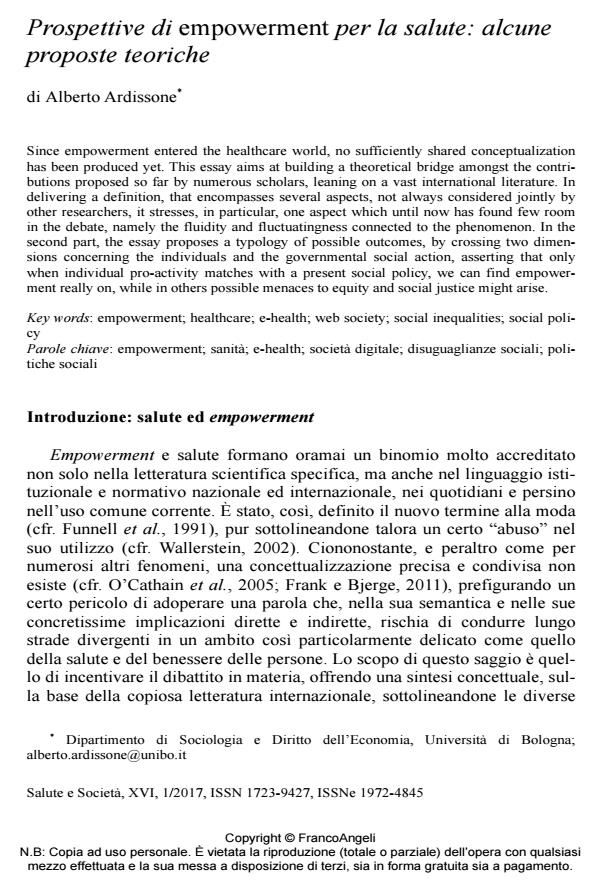Prospettive di empowerment per la salute: alcune proposte teoriche
Journal title SALUTE E SOCIETÀ
Author/s Alberto Ardissone
Publishing Year 2017 Issue 2017/1
Language Italian Pages 17 P. 163-169 File size 704 KB
DOI 10.3280/SES2017-001012
DOI is like a bar code for intellectual property: to have more infomation
click here
Below, you can see the article first page
If you want to buy this article in PDF format, you can do it, following the instructions to buy download credits

FrancoAngeli is member of Publishers International Linking Association, Inc (PILA), a not-for-profit association which run the CrossRef service enabling links to and from online scholarly content.
Since empowerment entered the healthcare world, no sufficiently shared conceptualization has been produced yet. This essay aims at building a theoretical bridge amongst the contributions proposed so far by numerous scholars, leaning on a vast international literature. In delivering a definition, that encompasses several aspects, not always considered jointly by other researchers, it stresses, in particular, one aspect which until now has found few room in the debate, namely the fluidity and fluctuatingness connected to the phenomenon. In the second part, the essay proposes a typology of possible outcomes, by crossing two dimensions concerning the individuals and the governmental social action, asserting that only when individual pro-activity matches with a present social policy, we can find empowerment really on, while in others possible menaces to equity and social justice might arise.
Keywords: Empowerment; healthcare; e-health; web society; social inequalities; social policy
Alberto Ardissone, Prospettive di empowerment per la salute: alcune proposte teoriche in "SALUTE E SOCIETÀ" 1/2017, pp 163-169, DOI: 10.3280/SES2017-001012